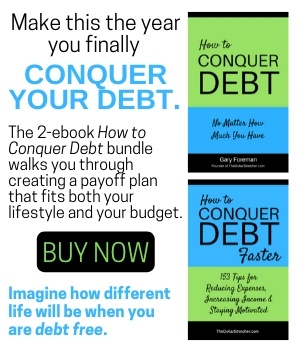Which Credit Card Should You Pay Off First? Smallest Balance or Highest Rate?
In this article: Guidelines for determining the best strategy for digging your way out of credit card debt.
by Andrea Norris-McKnight

According to the Federal Reserve, as of the first quarter of 2024, there was over $17.69 trillion in consumer debt in the U.S. So, a lot of people are asking the same question: Which debt should we pay off first?
It’s surprising to some folks that the right answer isn’t the same for everyone. For most people, the best payoff strategy will be one of two popular methods of getting out of debt: The Snowball or The Avalanche. One focuses on the highest rate debt first, and the other on the smallest balance.
If your lowest debt balance is also your highest rate, then the answer is simple. But if it isn’t, these guidelines can help you determine which of your debts you should pay off first.
The Math: An Example of Smallest Balance vs. Highest Rate
First, look at the question mathematically. We’ll keep the numbers simple for easy illustration.
Suppose you owe money on two credit cards, and you can afford to pay $500 each month to your cards:
- Credit Card A has a $5,000 balance and a 20% APR
- Credit Card B has a $3,000 balance and a 15% APR
If You Pay Off the Smaller Balance First
Using your monthly $500 for debt repayment, you send $400 to Credit Card B (the $3,000 balance) and $100 to Credit Card B (with the 20% APR). Using a debt calculator (I like this one at Undebt.it), you can determine the number of months it will take to get out of debt and how much interest you’ll pay, as shown in the following table.
Note: These examples assume that once the first card is paid off, you continue to pay the $500 a month to the second card until it is paid off.
| Credit Card | Number of Months | Interest Paid |
| Credit Card B | 8 | $169.91 |
| Credit Card A | 19 | $1,145.42 |
| Total Interest: | $1,315.23 |
If You Pay Off the Highest Interest Rate First
Now, using the same calculator, let’s determine how long repayment will take and how much interest you’ll pay by sending the $400 to Credit Card A (the higher rate) and $100 to Credit Card B (the smaller balance).
| Credit Card | Number of Months | Interest Paid |
| Credit Card A | 15 | $653.73 |
| Credit Card B | 20 | $539.20 |
| Total Interest: | $1,192.93 |
By paying off the card with the highest interest rate first, you’ll save about $122 in interest. By beginning with the smallest balance first, you will be out of debt slightly sooner than starting with the highest APR.
A debt payoff strategy that can save you money may seem like the wiser choice, but it isn’t for everyone.
Here’s a closer look at these two payoff strategies and some other factors to consider when choosing between the two.
Sign Up for Savings
Subscribe to get money-saving content by email that can help you stretch your dollars further.
Twice each week, you'll receive articles and tips that can help you free up and keep more of your hard-earned money, even on the tightest of budgets.
We respect your privacy. Unsubscribe at any time.
The Downside to Starting With the Highest Interest Card
For some people, there is a risk in starting a debt repayment journey with the highest APR card if it is also the highest balance card. A psychological or emotional risk.
Depending on your financial situation, paying off credit cards might be a marathon rather than a 5k run, meaning it might take you quite a while to pay off that high-balance, high-rate card. After six or eight months, you might get discouraged because it is taking so long to pay off at least one of your credit cards. You might give up trying.
Why? Some of us are not marathoners. We need frequent small wins to continue working toward a goal.
A way to get a small win is to knock out a small balance quickly. The fact that it’s the account with the lowest interest rate doesn’t matter. To your ‘feel good’ self, any small balance will do.
Choosing the Debt Repayment Strategy Best for You
What’s best for you? Paying off the highest rate of interest first is the most efficient answer. But depending on your personality, paying off the one with the smallest balance might be the best answer.
Before deciding, there are other ways to get positive feedback as you pay down debts. One simple way is to watch your total indebtedness drop each month. Just list the balance on all your accounts and add them up. You may choose to graph it and watch the trend line go down.
Another way to encourage yourself is to watch the amount of interest accruing drop each month. Each month, log how much interest each card has accrued and watch that downward trend.
Also, consider rewarding yourself along the way. Nothing big. Perhaps treat yourself to a new book or a new bottle of nail polish for every $1,000 you pay off.
If watching your credit card balances drop isn’t enough to motivate you, you might be one of those people who won’t feel successful until sending fewer credit card payments each month. If that’s the case, she should pay off the smallest account first so you feel you’re progressing successfully.
A Few Other Credit Card Repayment Strategies To Consider
The previous examples assume you make payments to your credit cards until they are paid in full. Unless you have a problem with uncontrolled spending, you might consider debt consolidation. Consolidating your debts into one loan means you’ll only have one payment so the repayment order no longer matters. Consider these pros and cons of debt consolidation options before deciding it’s a good option for you.
If you have several credit cards, one other strategy would be to pay off one or two of the small accounts to get started. Once you’re past the point of needing encouragement, shift to paying more on the accounts with the highest interest.
Get Help Paying Off Credit Card Debt
Use these guidelines to choose the best plan to pay off your credit card balances.
Which Debt Will You Start With?
More important than choosing the best payoff strategy is getting started now. Which account you focus on first is less important. Each month you delay paying down your cards, the more interest you accrue. The balances get a little higher and the hole gets a little deeper. So get started now paying down that credit card debt.
Reviewed July 2024
About the Author
Andrea Norris-McKnight took over as the editor of The Dollar Stretcher and After 50 Finances after working under the site founder and previous editor for almost 15 years. She has also written for Money.com, GOBankingRates.com, HavenLife.com and The Sacramento Bee.
Sign Up for Savings
Subscribe to get money-saving content by email that can help you stretch your dollars further.
Twice each week, you'll receive articles and tips that can help you free up and keep more of your hard-earned money, even on the tightest of budgets.
We respect your privacy. Unsubscribe at any time.
Popular Articles
On After50Finances.com
- 9 Things You Need to Do Before You Retire
- You Didn’t Save Enough for Retirement and You’re 55+
- When Empty Nesters Reorganize and Declutter Their Home
- Reinventing Your Career in Your 50s or 60s
- What Mature Homeowners Should Know about Reverse Mortgages
- 2 Reasons to Collect Social Security Benefits As Soon As Possible


